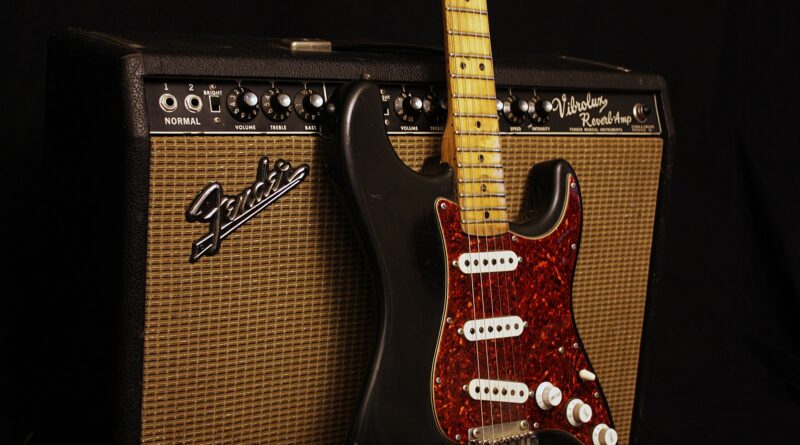Recently, Fender’s Executive Vice President Justin Norvell sat down with Music Radar to discuss the company’s work. Things have been exciting for Fender since 2020 and it seems that we’ll see a lot of innovation in the coming years. As Norvell explains, there’s going to be more work and new ideas on the digital modeling front.
When asked about the rising trend of pedal-format amplifiers and amplifier emulators and whether Fender will be going in this “hybrid” direction in the future, Norvell said:
“No, I think we feel that the digital space is where most of the innovation and the future of a lot of amplification is. Tubes are always a question and sometimes hard to get. The yield of tubes even when you get them and all of that stuff.”
“I think that digital always was, for many years, a compromise where you got a lot of versatility, it was less finicky maybe live. It was lightweight, portable, but you lost the tonality – something in the tonality.”

“And the Tone Master was a move to say, we’re not going to make this digital amp do 100 things pretty well, we’re gonna make it do basically one thing extremely well, and show that you can get to tone with a digital amp. I think that just blows the doors off and blows everything wide open.”
“From there, there’s tons of stuff in our r&d, and in our design areas right now that we’re working on to that end. And not just more retro reissues of amplifiers. So we see it kind of moving into a more modern space as well but I think the establishment of the sonic character and the dynamics of when you back off, and turn the volume on your guitar down, and the convolution reverb and all of the things that we did that made those amps work, are great.”
“I think you’re seeing that with other people’s amps as well where there’s IRs in tube amps, and there’s load boxes, and all of these things. Even if you are a tube purist at some point you still probably have to engage it in a way where you’re not turning it to 10 through a 4×12 everywhere you are, and how do you get what you need out of that?”
“And so even the analogue is having a digital bridge, kind of like analogue to digital, kind of conversion. So that’s super exciting to us and I think that the future is that there’s a lot coming that’s going to be very exciting from us on that front.”
When reminded that the new generation of guitar players is still introduced to the old-school 1960s-style tone with some of these pedals, he said:
“Having no idea that people would be putting a six-foot wide pedalboard on the ground in front of it! But it just works and I think that’s one of the things about all the platforms whether P Basses or J Basses, Strats, Teles or Jazzmasters, they adapt to the personality of the player really well.”
“Not all Strats sound the same, so they have that transparency but with colour; because you can hear a Strat and hear a Telecaster so it’s not neutral but it’s able to adapt to the personality and style of the player as the amps do as well.
“It allows players to create a more individualistic sound that they’re seeking, and there’s so much more of that these days. Especially as guitar has expanded so much from riffing and driving the song to really sometimes being the color and the ear candy; sounding very unguitar-like in many cases.”
Further on, Norvell was asked about the future trends and what he thinks that guitar effects market will be like in coming years. He weighed in by saying:
“It’s all of those but it’s the interesting flips on those where it’s gated reverbs and reverses and interesting asynchronous dual tremolos. It’s more to the fringes. There’s always your basic pedals but I think people are enjoying all of the really out-there kind of effects.”
“We have our Reflecting Pool which is a delay/reverb combination that gets you shimmer and the deeper effects, but other people out there, like the Chase Bliss stuff and the Hologram [Microcosm], and that’s stuff that I think is really inspiring, because with great pedals you can build a song, a song that never would have existed, because of the tone.”
“So it’s not like hitting an overdrive to play a solo, when you’re really tweaking on these kind of heavily effected pedals, you can really come up with some cool stuff that creates completely new sounds and music.”
Of course, he was also reminded of Fender going “all in” on effects pedals. Asked whether this trend will continue in 2023, he said:
“Yes, and I think that we’ve been mindful as we’ve started and have entered that market of making sure that the bases were recovered. The Hammertones have done great, making an affordable line of pedals that are still designed by Stan Cotey, the same guy who designed the higher end pedals that we did.”
“Pedals are very important to us, and we have some cool stuff coming towards the middle or end of the year that I think will be really, really cool for everybody to check out. And it’s the next natural evolution for us as we move forward.”
Among other things, Norvell was also asked to share his thoughts on where the industry is headed and whether he can reveal any of Fender’s future plans with that in mind. He said:
“Well, I would say gear predictions would be just the continued push in digital amplification and effects. I think those two areas are leading the industry in terms of innovation and forward momentum.”
“New sounds drive the industry, so when there was distortion, that changed everything, when there was feedback, it changed everything, the Floyd Rose and the dive bomb changed everything. The delay pedal with Edge changed everything.”
“So these sonic advancements can completely bring about new genres and new cultural movements really, to not be so grandiose about a pedal or an amplifier, but that’s really the opening of possibilities that exist there.”
“So I think those are the biggest ones. Our commitment right now is full steam in the digital amplifier and effects space. And it’s probably a little early to really lean into it but just there’s more to come on our Tone Master platform later in the year, and it’ll be great.”
Photos: John Tuggle (1979 Fender Stratocaster and 1966 Fender Vibrolux Reverb (2010-03-17 02.12.18 by John Tuggle))


